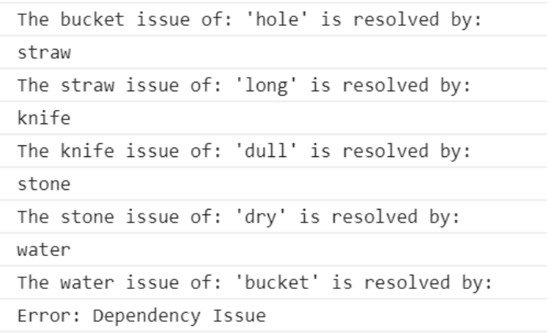The perineum.
In addition to the medical definition, it's a useful term for the no-man’s land between Christmas Day and New Year’s Eve when you don't really know what to do with yourself.
This year though, I went to York with my kids who are now usefully old enough to take for a pint rather than touring the Jorvik Viking Centre.
As they don’t get chance to go to nice hotels as much as I do, it was great for them to get change of scenery and for me to selfishly have their company for a day or so.
We walked, we drank, we talked, we ate and we drank some more.
Next day, we had a huge breakfast before heading out on Saturday morning to explore the historic streets and buildings of York.
Spending quality time with my kids was great. But it’s hard having kids who grow up and do back to you what you did to them over a couple of decades.
In different ways, both have distilled and bottled my ability to be annoying. And both relish the chance to uncap their personally branded bottles to give me a taste of my own medicine.
Ed, my eldest, is a master wind-up merchant. He can drive his sister into a frenzy in no time, laughing like a hyena as he senses her pulse ratcheting.
In York, he was on his finest form. Taking a song that I used to use to wind up their mother - much to their delight as kids - and singing it incessantly as we toured the Shambles and York Minster. He kind of ruined the whole experience in a mischievous and memorable way that is difficult not to appreciate as it has anchored the moment in my mind.
There’s a Hole in my Bucket is an annoying song, largely because of it’s structure.
Best sung in a Cornish accent, it documents an elongated dialogue between Henry and Liza where they seek to fix an eponymous bucket. But, given the need for water (the song explains why) and therefore a need for a working bucket, the lyrics loop back to the start only to be repeated in full as many times as the singer can be bothered with.
In Ed’s case that was around 15 times - with each repetition engendering greater gusto and a slightly more Cornish accent.
Irritating isn’t the word.
My coping mechanism was simple..
"Can I turn this hell into a blog?"
The start of a new year - especially a new decade - is a time for reflecting on fresh starts and cyclicality. But resolutions have always irritated me. Why wait until January to decide to do something new or different or better? Why not just start now?
Resolutions are, if anything, anything up to 11 months of procrastination.
But cyclicality is around all of the time - not just at the dawn of a new year or new month.
We start things, we go through some structured process of doing them, life happens and the thing we started either works out or it doesn’t. Ultimately, our commitment peters out a bit.
Later, we start things again. Slightly different things. With renewed gusto.
The whole structure is very ‘Hole in my Bucket’.
Fitness, dieting, quitting smoking and cutting down on alcohol all follow this pattern.
As does Business Transformations - where somebody identifies a hole in some bucket and kicks off a process of fixing the hole. The steps are obvious - you ask for advice before sourcing some straw that isn’t quite the right shape. You find a knife to cut it - which turns out to be blunt and needs sharpening. That whole processes gets a little long winded and tiresome before everyone runs out of ideas, steam and enthusiasm.
The bucket winds up being a little better but people still don't like using it.
Then, a few years later, somebody points out another bucket problem.
I’ll leave you to make up the metaphoric connections - sometimes vague is more specific.
Everyone is so fascinated blindly following the structure of the song that they fail to stop and ask some fundamental questions:
- Why does Henry need the bucket?
- Should Henry really be leading this project?
- Will Liza’s solution of Straw really create a water-right seal? Surely there are better solutions than Straw? Has anybody used Dock Leaves before?
- Is Liza the right person to be advising here?
- Did anybody think of changing the approach and taking the stone to the stream to remove the dependency on the 2nd (or Nth) bucket?
Great idea, let’s write a paper for the next steering committee meeting.
You see, when you’re doing something big and complex, the structure is what provides control. The steps are laid out clearly so that you know the lines of each verse, when the chorus kicks-in and the number of verses to sing. Not to mention the key to sing in.
But, if you’ve ever listened to a song on repeat (Apple Music does this in my car as a default for some reason), what was once a tune you loved quickly dissolves into noise.
The structure gets lost.
Sometimes, the structure itself can be monotonous. Which, on long or bad songs, creates a sense of ‘where am I?’ mid-tune. But the repetition of a song turns the structure into mush.
The déjà vu, sense of Ground Hog Day and of course the déjà vu cause sensory loss.
Business side, the cyclicality of Business Transformation repeat might be 5 yearly - a new Operating Model, an acquisition or merger, a better IT system or something involving Digital, Agile, Customer Experience or RPA.
Essentially, somebody senior went to a Gartner conference and heard that your competitors are all doing [INSERT FAD] so you ought to build this into your 5 year plan.
But if you’re a consultant. If you do these things to actual businesses who do real work - your cyclicality is annual. This means that every year you’re involved in fixing another Hole in somebody else’s Bucket.
Sometimes you're working on different Buckets in parallel. With different kinds of Holes.
So, you wind up sleep walking, kicking the buckets down corporate corridors as you traipse them bleary eyed.
Your structure gets so blurred that you barely notice what’s going on.
"Who’s bucket is this again?"
And you’re meant to be the experts bringing the structure.
Your customer is looking to you to provide clarity and keep them on track.
If you’re doing something big, then reminding yourself that you’re following a structure is a good thing. Knowing what the structure is and where you are in the structure should be a constant question on your mind.
But the most important thing is recognising that the structure might repeat itself again in the near future. Which is kind of frustrating.
If the thing the structure delivers is for you then you need to ensure that the structure delivers something that doesn’t need re-doing 2 years from now. It needs to create something enduring for you.
Otherwise you’ll be staring at another hole in the bucket in 2022.
As a business undergoing transformation , don't focus on the structure, focus on the quality of the outcome. Make sure each phase in the structure delivers things that lead to greater clarity or confidence in the enduring thing that you want delivered at the end.
If the thing that the structure delivers is not for you - if you role is a transient one, if you’re an advisor, just there help, paid day rates to create Excel trackers - then, you need to realise that your customer doesn’t know this structure - they’ve never been through it before.
And while it’s familiar to you - while you know what things like RAID logs, TNAs, STPs, Cutover and Reference Architecture are - your customer probably doesn’t.
This is most likely the first time they’ve heard this song.
They don’t know the words yet.
An important part of your role, Mr Consultant, is to provide the structure and a clear sense of place within it to ensure your customer doesn’t wind up in No Man’s Land.
The perineum.
Epilogue
When I started this, I asked one of our Developers a typically obtuse question...
Could you write a generic program that loops through an array of items in the song "Hole in my Bucket"?
Just as I was about to hit 'Publish' his response came through and resulted in this epilogue
The code:
/ 1. Define Requirements, Issues, and Dependencies
var requirements = ["bucket","straw","knife","stone","water"];
var issues = ["hole","long","dull","dry","bucket"];
var dependencies = requirements.filter(element => issues.includes(element));
// 2. For Every Requirements Get Solution
for( i = 0; i < requirements.length; i++ ){
var requirement = requirements[i];
var issue = issues[i];
console.log("The "+requirement+" issue of: '"+issue+"' is resolved by:");
if( i!=0 && dependencies.indexOf(issue) != -1 ){
console.log("Error: Dependency Issue");
}else{
// 3. If No Dependencies Then Solve Issue
console.log(requirements[i+1]);
}
}
"I'm assuming you wanted to elude to the dependency issue? If so this should be ok. Just run it in 'Console' in your Browser."
I did and got this:

The program stopped because in the array there's a dependency on Bucket.
And that's kind of cute.
Because when you're are trying to transform your business, there's a dependency on the business. More specifically, the people in the business who have to change (or be changed) in order to do something fundamentally different.
No matter what structured process you go through. No matter what help you enlist from experts. No matter what technology you invest in...
If you don't transform the business, you won't transform the business.
It's all about people.
Obvs.
.png?width=290&name=67ea7008fb82616d688a6cfe-HeadshotPro%20(2).png)










